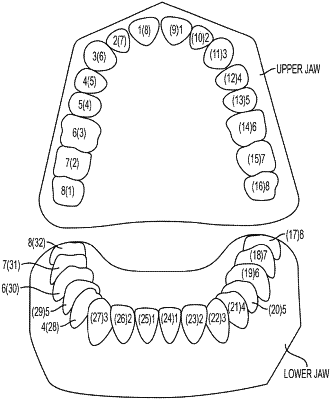| CPC A61C 7/002 (2013.01) [A61C 7/00 (2013.01)] | 11 Claims |

|
1. A computer-implemented method comprising:
determining, by one or more processors, a schedule of movement for dental objects during treatment stages, wherein the schedule of movement indicates whether each of the dental objects moves during each of the treatment stages;
calculating, by one or more processors, a respective route from an initial position toward a final position for each of the dental objects during the treatment stages;
modifying, by one or more processors, the schedule of movement with a first modification to avoid a collision or obstruction between two of the dental objects on their respective routes by:
moving a first of the dental objects away from the respective route of a second of the dental objects; and
moving the first dental object toward its respective final position after the second dental object has sufficiently traversed its respective route to avoid the collision; and
fabricating at least a first dental appliance based on the modified schedule of movement.
|